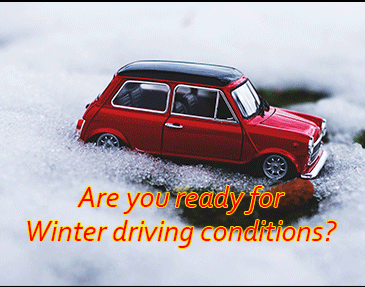Are you ready for winter driving conditions?
We have been pretty lucky for the last few winters, which have been fairly mild with little or no snow, at least in East Anglia.
This means that many of us will have little experience of driving in really wintry conditions, so we have a few tips for you.
Using chains or special winter tyres is rare in this country as they are generally not needed, but there are still hazards drivers need to be aware of and know how to handle.
The main winter hazards are high winds, driving rain, fog and sometimes snow.
Driving in rain and fog
In both cases, the road surface is likely to be more slippery and visibility will become more difficult so the first piece of advice is to drive slowly, steady and smoothly.
Remember, if there has been a dry spell, oil deposits on the roads may increase the risk of skids and, in rain, tyres losing grip so that the vehicle aquaplanes.
You should also ensure that you leave extra room between your car and the vehicle ahead, particularly on motorways. In treacherous conditions, where visibility is reduced by spray, it is better to decelerate rather than use your brakes.
If you are renting a vehicle for a long-distance drive in such conditions, you may need to use windscreen wipers and the screen washer to clear the windscreen more frequently, so make sure the water is regularly topped up.
Another tip for driving in fog is to use dipped headlights rather than main beam, which can make it harder to see ahead.
Winter emergency kit
A blanket, drinking water, warm coat and a torch, plus a shovel in case of snow drifts should be part of the emergency kit if you get stuck somewhere, and make sure to keep your mobile phone topped up.
Headlights
The Highway Code’s Rule 226 states that you must use your headlights if visibility is seriously reduced. A good rule of thumb is that this is generally when you cannot see for more than 100 metres (328 feet).
Also, if the car is fitted with rear or front fog lights and you have used them in fog, you must switch them off once you are clear of the fog.
Driving in wintry conditions is really about using common sense and adjusting your driving, not taking risks.

